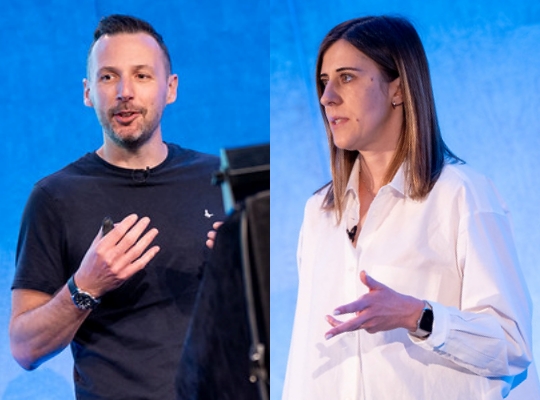Codetown
Codetown ::: a software developer's community
People's Guide to Contracting
I've started a handbook called "The People's Guide to Contracting". It's a work in progress, so you can check here from time to time if you want to see it grow. Here's what I've written so far:
People’s Guide to Contracting
In the words of John Zinn “Wherever you go, there you are!”
Dealing with existing code problems - There are two situations you’ll experience when you’re brought in as a contractor. One is new development. The other is working with existing code. The software development lifecycle (SDLC) applies in both cases. Here are a few tips.
- Be prepared from the start - You’ll be interviewed for the job. There’s usually a period of time to ramp up before the job starts, but not always.
- The O’Reilly Bookshelf - has most books available on software development online for a small subscription fee, available as a trial. Your local software user group can sometimes get you a free subscription. O’Reilly gives away lots of books through user groups.
- Books in printed form are good and easy on the eyes, but dated sometimes.
- Online forums - are useful tools to post and reply to topics you have questions about. Usually have rapid responses.
- Stack Overflow
- Codetown.us
- Various Usenet News Groups on specific topics
- User groups - good to bounce ideas in person
- Invest in the appropriate tools and equipment. You’re called in as a contractor because you have the skill set the customer lacks. That includes knowledge about the subject, technology, and you as an independent contractor must provide your own equipment and software tools. There’s no time to waste on slow computers and out of date tools. Get the best you can afford and keep it up to date. Be sure you and the customer have the same configuration.
- Listen carefully to every aspect of the project - Keep good notes. Google Docs is a useful tool that lets you outline and categorize your notes. It’s reliable and can be secure. You can also easily download everything quickly for use when you are offline.
- Analysis - Unified Modeling Language (UML) is an industry wide standard and your best friend. Start with Use Cases and support them with Interaction Diagrams, Sequence Diagrams, and the rest of the UML tools. Modify these diagrams every time something new arises. Fowler’s UML Distilled is good.
- Code dissection - This is why I started this handbook. I call my approach “The ABC’s of Code Dissection”.
- Get code mentors to walk you through existing code. There’s nothing better. But, keep your eyes open for false assumptions.
- Use pseudocode to model existing code. Numbers and letters work well for modeling. For example, use variable names like A, B, C... and values like 1, 2, 3... to speed up transcribing the model. Use your computer to capture the model if possible to avoid having to copy notes.
- Print out the codebase and pin it up on the wall. It’s easier to deal with it in printed form. Use colors and diagrams to support your analysis. You’ll find yourself doing the same thing project after project.
- Break the code up into sections. For example, user interface, database and server might be the top level sections. You’ll encounter overlap in the code, so create sections that capture where the code is and what it affects.
- Software architecture pattern recognition - You’ll begin to see patterns in the architecture. Isolate these patterns and you’ll have the power to reuse or change them. Gamma’s “Design Patterns” is good.
- Patterns allow for “pluggability” which is the ability to swap components easily. For example, say you discover your database doesn’t support a feature you need like stored procedures. Swapping the database can be a simple task if patterns were used in the SDLC.
- Code injection is the Spring Framework’s approach. It’s accomplished using patterns in the form of code components. Isolate repeated code to create objects, modules, whatever your programming language allows. Every bit of code you draw out into isolated units will speed up the SDLC and make the program run faster.
- Data modeling - you must often create your own data. Do a model of the project workflow. My example is “I am a beam of light”, which enters the eye. The light hits the retina, etc. Separate out verbs and nouns, making a glossary. You’ll wind up with a Data Dictionary with names and attributes, quantities and constraints. You can create your own data from the dictionary.
- Testing - automate with unit and integration tests. Write tests to verify code before you write the code. Every change you make to existing code must not break the codebase. You can inject your test framework or have a separate test codebase. It’s easier to have a switch that turns testing on and off.
- Tools (draft):
- Always question the given scenario. Be brave and write snippets to prototype alternatives to run with test data.
- Make code components if you find changes overly involved to implement. For example, if you need to add a column to a database table and it involved dozens of independent changes to the underlying codebase, consider extracting the HQL (or whatever) and injecting reusable components.
- Workflow - your daily workflow should include
- Log - keep a record of time, tasks and comments every day. The Log is your tool to keep your mind uncluttered. It allows you to think about other things while retaining details you couldn’t possibly remember later.
- Backups - use a code repository every time you change anything in the code with a README file or details explaining clearly what you’ve done and discovered.
- Daily standups - in one form or another you should talk with your team or lead every workday. Communication keeps details of work in the open and exposes hints and tips that make work more efficient. Beck’s “Extreme Programming” is good.
Surround your work with healthy breaks and pleasure, rest and moderation. Stay tuned. This is a work in progress.
Notes
Welcome to Codetown!
 Codetown is a social network. It's got blogs, forums, groups, personal pages and more! You might think of Codetown as a funky camper van with lots of compartments for your stuff and a great multimedia system, too! Best of all, Codetown has room for all of your friends.
Codetown is a social network. It's got blogs, forums, groups, personal pages and more! You might think of Codetown as a funky camper van with lots of compartments for your stuff and a great multimedia system, too! Best of all, Codetown has room for all of your friends.
Created by Michael Levin Dec 18, 2008 at 6:56pm. Last updated by Michael Levin May 4, 2018.
Looking for Jobs or Staff?
Check out the Codetown Jobs group.
InfoQ Reading List
Magika 1.0: Smarter, Faster File Detection with Rust and AI

Google has just released version 1.0 of Magika, a substantial rewrite of its open-source file type detection system. The new version leverages AI to support a broader range of file types and is built in Rust for maximum speed and security.
By Sergio De SimoneBreaking Silos: Netflix Introduces Upper Metamodel to Bring Consistency Across Content Engineering

Netflix has introduced the Upper metamodel within its Unified Data Architecture (UDA) to standardize domain definitions and generate consistent data container representations. UDA links conceptual models to GraphQL, Avro, SQL, and Java artifacts, supporting projections, mappings, and knowledge graph-based discovery across content, advertising, and operational systems.
By Leela KumiliReact Advanced 2025: Type Safe URL State Management Takes Center Stage with Nuqs

Nuqs, a cutting-edge open-source URL state manager for React, revolutionizes application development with its type-safe approach. Showcased at React Advanced 2025, it empowers developers to share complete app states via URLs, enabling "teleportation" and "time travel." Adopted by industry leaders, Nuqs simplifies state management while ensuring robust performance and type safety.
By Daniel CurtisPresentation: Empowering Teams: Decentralizing Architectural Decision-Making

Peter Hunter & Elena Stojmilova share Open GI's journey from a slow, legacy monolith to a cloud-native SaaS platform. They detail how adopting Team Topologies and a decentralized architectural approach empowered teams. Key practices discussed include utilizing Domain-Driven Design to create a Context Map, implementing the Advice Process with Architectural Principles, and more.
By Peter Hunter, Elena StojmilovaPodcast: Leading from Any Position: Richard Bown on Humane Engineering Organizations

In this podcast, Shane Hastie, Lead Editor for Culture & Methods, spoke to Richard Bown about transitioning from management back to individual contributor roles, leading from any position, and creating humane engineering organizations.
By Richard Bown
© 2025 Created by Michael Levin.
Powered by
![]()
You need to be a member of Codetown to add comments!
Join Codetown